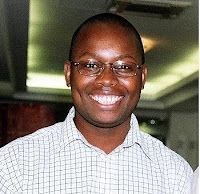Malawi Needs to Invest More in Tertiary Education
The recent Global Competitiveness Report (2008-2009) published by the World Economic Forum (WEF) has ranked Malawi on position 119 out of 134 countries in terms of the Global Competitive Index (GCI). Malawi’s GCI score is 3.42. The verdict on other specific factors is explained below, including the fact that the country’s best performing factor is the labour market efficiency while the worst performing factors are higher education and training, market size and technology. Esteemed readers might say but what can a country do about market size? Well, the size of a country’s market is not just about the number of people in an economy, it is also about the purchasing power of participants in a particular market, which creates demand but also the supply side which constitutes the goods and services available in that particular market.
The Report identifies among others, six efficiency enhancers, which are crucial for efficiency-driven economies. These factors include: higher education and training, goods market efficiency, labour market efficiency, financial market sophistication, technological readiness and market size.
According to the Table 7 found on page 15 of The Global Competitiveness Index, in terms of efficiency enhancers, Malawi ranks as follows:
Overall, in terms of Efficiency Enhancers Malawi has a score of 3.42 and is ranked 101 out 134 countries surveyed. In terms of specific efficiency enhancing factors the Malawi scores relatively well in terms of labour market efficiency with a score of 4.60 and a ranking of 42 (out of 134 countries). The next factor in which the country performs well is financial market sophistication (score of 4.40 and a ranking of 62); this is followed by goods market efficiency (score of 4.03 and ranking of 84); higher education and training scores 2.85 causing a ranking of 116 out of 134 countries; the Malawian market size scores 2.34 leading to a ranking of 121, and lastly technological readiness scores 2.33 resulting in a ranking of 127 out of 134 countries.
These scores and rankings are very good indicators for appraising the performance of various sectors of the Malawi’s economy and in some cases a good reflection on the performance of relevant government ministries in creating and enforcing the right policy and regulatory environment. For example, a good result in the labour market efficiency reflects good policies in the labour market, which span across allied ministries such as basic health, basic education, labour laws and others. High ranking in terms of financial market sophistication is a good reflection on sound financial and economic policies and so does the goods market efficiency reflect on sound policies relating to the manufacture and movement of goods including investments in physical infrastructure and better taxation policies, among others. On the other hand, a poor result on technology, higher education and training may be a verdict on the country’s poorly structured educational system, the under-investment in tertiary education and the limited capacity of tertiary educational institutions to absorb the large number of students being churned out from the primary and secondary levels of our education. Readers may appreciate that Government has invested a lot in primary and secondary education since 1994. A similar high level investment is now required at the tertiary level of our education, including training colleges and universities, if we are to improve our competitiveness. Quite clearly the long term solution to improving our global competitiveness, in so far as higher education and training are concerned, does not lie in the so called quota system or “equitable distribution” of the currently limited places at the tertiary level of our education but rather in a sustained investment for the expansion of such places in order to increase access and guarantee a merit-based admission system.
Kennedy Lweya, PhD
Training and Development Consultant
Labels: Malawi Tertiary Education


0 Comments:
Post a Comment
<< Home